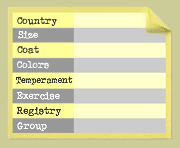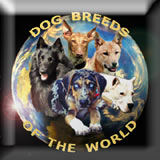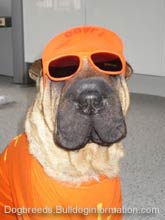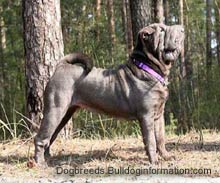An unusual, wrinkled breed, developed especially for use in staged dog fights. For years it was considered one of the rarest dog breeds of the world.
Recent studies analyzing the DNA of the domestic dog breeds have demonstrated that the Shar pei is one of the fourteen most ancient dog breeds, together with three other Asian spitz-type dogs: the shiba inu, the Akita and the Chow Chow. The distinctive blue-black tongue of the Shar Pei and the Chow Chow indicates that they are indeed related. They both probably descend from the Han Dog, an ancient guard dog that existed during the Han Dynasty in China about 2,000 years ago. Their place of origin is Dali (or, Dailek, Dailet), a town in southern China in the province of Guangdong.
In the seventies the breed was on the verge of extinction. The breeding had been neglected for years and the Dailet fighting dogs were no longer in demand. When the Chinese Communists came to power, a heavy tax was imposed on dog owners and a further edict declared dogs an ostentatious expression of luxury and eventually banned dog breeding alltogether. The breed survived thanks to fanciers in Macao (Portuguese China) and Hong Kong.
The Shar-Pei is an alert and intlligent dog, which learns easily. Due to their molosser heritage, Shar peis often have dominant temperaments and require early socialization and firm training.
.
.
.
.










